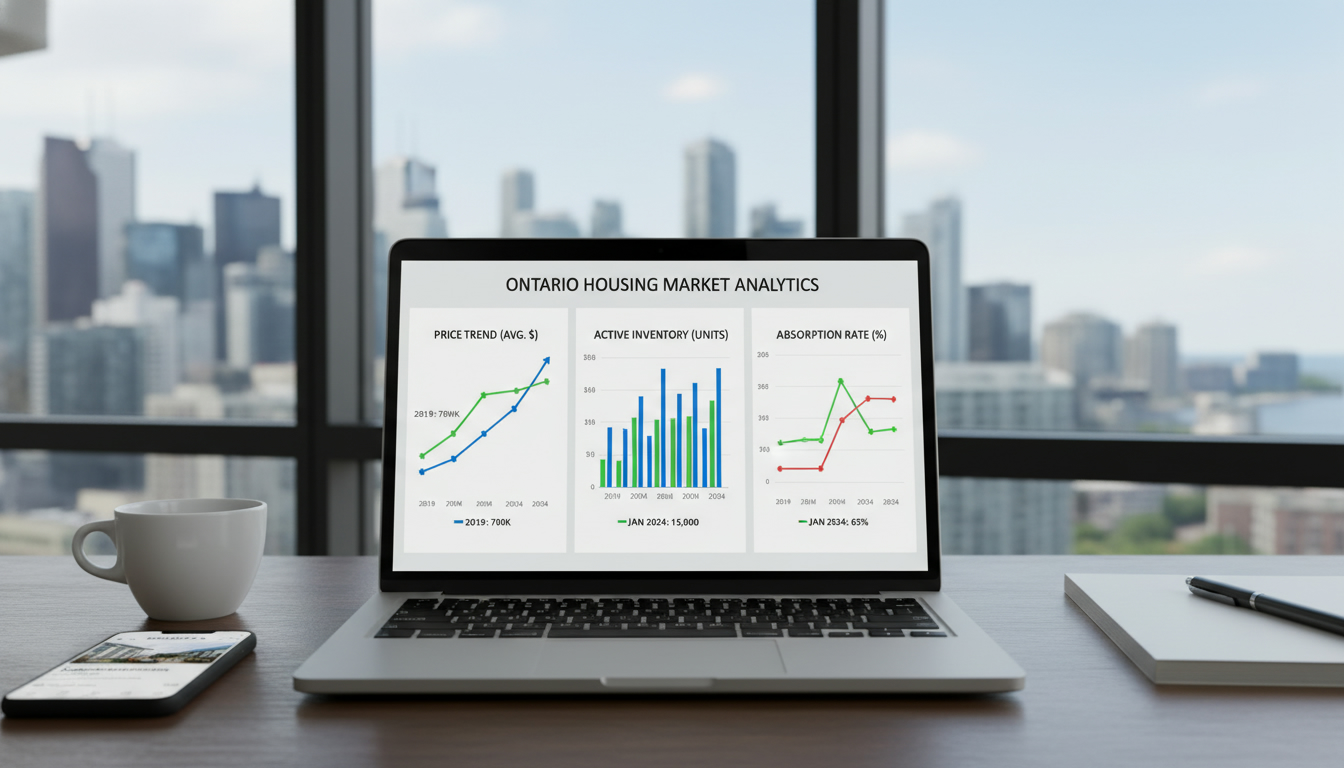How do I track market trends in Ontario?
Want to dominate Ontario’s market? Here’s the fastest way to track market trends in Ontario and beat other buyers and sellers.
Why tracking market trends matters
If you want predictable outcomes in real estate, you must track market trends. Knowing where prices, inventory, and demand are heading turns guesses into decisions. This is how top agents and investors win in Ontario.
Clear, actionable steps to track market trends in Ontario
Follow this 5-step routine. Do it weekly, and you’ll stay ahead.
- Monitor official data sources
- CREA / REALTOR.ca: daily MLS snapshots and monthly reports show sales, new listings, average price, and days on market. Set alerts and download CSVs.
- Teranet–National Bank House Price Index: best for provincial price trends.
- CMHC and StatsCan: use for housing starts, demographics, and vacancy rates.
- Build a simple dashboard
- Use Google Sheets or Excel. Pull CSVs from CREA and Teranet monthly. Calculate: months of inventory, absorption rate (sales ÷ new listings), median price change YoY, and average days on market.
- Visualize 3 charts: price trend, inventory trend, and absorption rate. Review weekly.
- Track interest rates and policy moves
- Watch Bank of Canada rate announcements and the Ontario government’s housing policy updates. Small rate moves change buyer power and shift demand fast. Add a rate history chart to your dashboard.
- Hyper-local insight: neighbourhood-level tracking
- Save searches on REALTOR.ca and set geofenced alerts for specific postal codes or neighbourhoods. Track price per square foot, condo vs. freehold splits, and new development completions.
- Attend municipal planning notices and local community meetings. New zoning or transit plans move values before province-wide stats show anything.
- Use paid tools selectively
- Altos Research, HouseSigma, and Zoocasa give live market heat maps and rolling market stats. Use them to validate your spreadsheet signals. Don’t rely on one tool; compare two sources weekly.

Metrics that predict moves (not vanity metrics)
Focus on leading indicators:
- Sales-to-new-listings ratio (absorption). Over 60% = seller’s market.
- Months of inventory. Under 3 months = strong demand.
- Price per sq ft trend by neighbourhood.
- New listings velocity. Sudden drops mean fast price spikes.
Quick weekly routine (15 minutes)
- Monday: download CREA and Teranet updates.
- Wednesday: update dashboard charts.
- Friday: scan interest rate headlines and local listings alerts.
Conclusion and where to get help
“How do I track market trends in Ontario?”—now you have the plan. If you want a ready-made dashboard, neighbourhood-level reports, and interpretation you can act on, reach out. I’m Tony Sousa, an Ontario real estate expert. I build market dashboards and give clear buy/sell guidance based on data, not guesses.
Contact: tony@sousasells.ca | 416-477-2620 | https://www.sousasells.ca





















